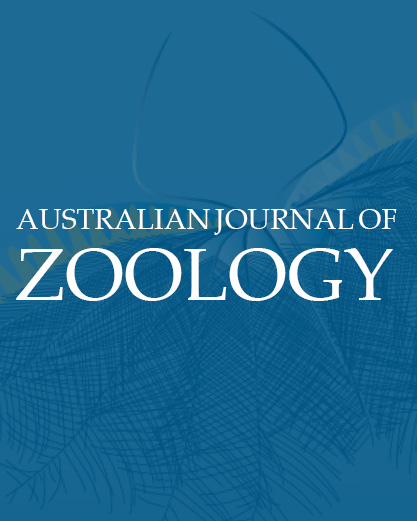We report the first known case of island dwarfism in a tropical Australian python. Photograph by Alastair Freeman.
ZO25030 Abstract | ZO25030 Full Text | ZO25030PDF (292 KB) Open Access Article

Volume 73 Number 5 2025
We report the first known case of island dwarfism in a tropical Australian python. Photograph by Alastair Freeman.
ZO25030 Abstract | ZO25030 Full Text | ZO25030PDF (292 KB) Open Access Article
The Southern Angle-headed Dragon (Lophosaurus spinipes) is a cryptic agamid endemic to the warm-temperate and subtropical rainforests of south-eastern Australia. We conducted a systematic literature review to synthesise information relevant to its potential conservation in the face of predicted climatic change. There is limited empirical data on L. spinipes; more research on population sizes, trends over time, thermal properties of the microclimate, thermal limits, and metabolism, with a focus on rising environmental temperatures, is required to underpin conservation decisions. Photograph by B. J. Traynor 2022.
ZO25024 Abstract | ZO25024 Full Text | ZO25024PDF (721 KB) | ZO25024Supplementary Material (424 KB) Open Access Article
Warning: Aboriginal and Torres Strait Islander people should be aware that this publication contains images of deceased persons, and discussion of historical events which may be deemed culturally sensitive.
We explore the history of the taipan’s ‘discovery’ by Western scientists, and early attempts to classify the species. Our analysis of historical documents reveals a much greater role for First Nations people in collection of the first taipans known to science; and identifies reasons why this giant snake remained poorly understood for many decades. Photographs by Rob Valentic and Ray Sumner.
ZO25009 Abstract | ZO25009 Full Text | ZO25009PDF (7 MB) Open Access Article
We compared gas exchange for two insects varying in the absence (red flour beetle) or presence (cockroach) of air sacs, using 21% oxygen in helium to increase the diffusion rate relative to normal air. Contrary to theory, gas exchange of the small red flour beetle was mainly advective, enhancing our physiological understanding of this pest beetle with implications for its pest management. Diagram by W. Abbas.
ZO25023 Abstract | ZO25023 Full Text | ZO25023PDF (1021 KB) Open Access Article